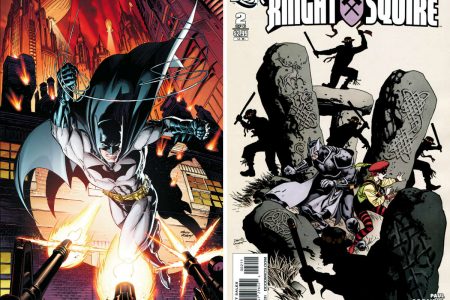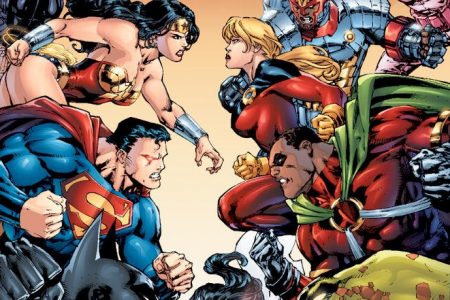Kill Shakespeare #7–12
Written and created by Conor McCreery and Anthony Del Col
Art by Andy Belanger
Colours by Ian Herring
Lettering by Chris Mowry, Neil Uyetake and Shawn Lee
Edited by Tom Waltz
Published by IDW Publishing
When I reviewed the collection of the first six issues of this series, I said that I enjoyed it and was looking forward to the denouement of the story. Now that I have consumed the final half of this adventure, I was not disappointed by the conclusion and execution of a great idea.
The first trade paperback did all the hard work, creating the universe in which the characters live and setting up the story. This means the second collection can revel in the broad sweeps and the battle of heroes against foes in the world of William Shakespeare. Hamlet has joined Lady Juliet, Othello, Falstaff and Iago in the battle against Richard III and Lady Macbeth, and in the search for the Bard himself. But there is still time for character development: a play within a play, a device used in Hamlet, is used on Hamlet himself, which leads to story within a story, as we learn how Hamlet and Juliet in this world differ from the plays. Duelling practice between Othello and Iago is intercut with images of how these two men suffered at each other’s hand, with Iago’s dialogue about the sword fighting having another meaning regarding their relationship. There is even a nice reversal of the balcony scene, as Juliet climbs up to Hamlet to give him courage and a kiss.
The comic book is enjoyable in its own right, although knowledge of Shakespeare enhances it – the use of phrases from the plays are littered throughout the book, even seemingly innocuous terms such as ‘this infinite space’. It’s sometimes easy to forget how many expressions Shakespeare was responsible for introducing to the English language. The authors work Shakespearean dialogue into the book – even I recognise the ‘unsex me’ reference from Lady Macbeth, ‘Oh, happy dagger’ from Romeo and Juliet, as well as ‘Sound and fury, signifying nothing’ – but I like that there is deviation: when Hamlet finally meets Shakespeare, Will tells him ‘piss off’, which is a lovely earthy phrasing for a man revered for his poetry and use of the English language. Even my limited awareness of the plays brings something extra to this book, which uses language well – the speech by Hamlet to Shakespeare to force him to face his creations and the speech by Shakespeare to rouse the rebellion soldiers are rousing and inspiring without copying Shakespearean dialogue.
The battle between the two fractions is the climax of the book, and it is brutal and bloody and savage – as were the Shakespeare plays, as people forget – and it takes up the second half of this collection because there is so much to fit in. There is betrayal from Iago, double-crossing between Lady Macbeth and Richard, deaths of major characters, Shakespeare fighting his creations, as well as leaving open the possibility of further adventures in this universe, if the authors are given the opportunity to entertain us with more stories. However, there is still humour: the final words in the story are from Hamlet, ‘I can hear you laughing from down here, Falstaff’, after he has been kneed in the groin (in an affectionate way) by Juliet, which leaves the reader with a smile.
I have spoken a lot about the writing, because it is an important part of a book about Shakespeare (I can understand why this book has been used to bring Shakespeare to a new audience in schools), but the art is important as well. Belanger’s style has become more solid and confident through the series, able to turn from comedy to tragedy, from vast and bloody battlefields to the talking heads of a dialogue scene, from magical battles to flashbacks. There is more design in this book as well, using splash pages in scenes where they will have the most impact, or using a split in the middle of a page to enhance the emotion of a scene (when Juliet and Hamlet reveal their histories to each other). I particularly liked the motif of disembodied eyes percolating out of clouds or from smoke at the start and end of the book, reflecting the nature of the different levels of authoring in a story about William Shakespeare and his stories.
Kill Shakespeare is an excellent comic book series that rewards re-reading and which also makes you want to know more about Shakespeare plays. How many comic books can you say that about?
Disclosure: this book was provided for review purposes.




